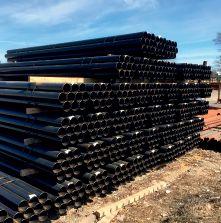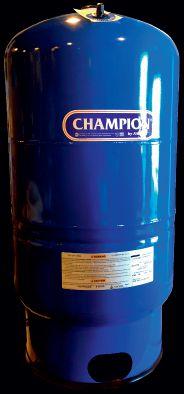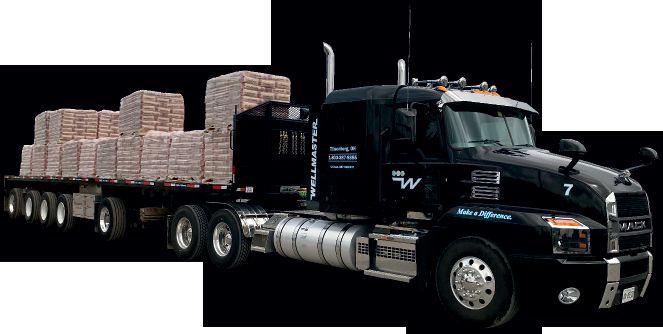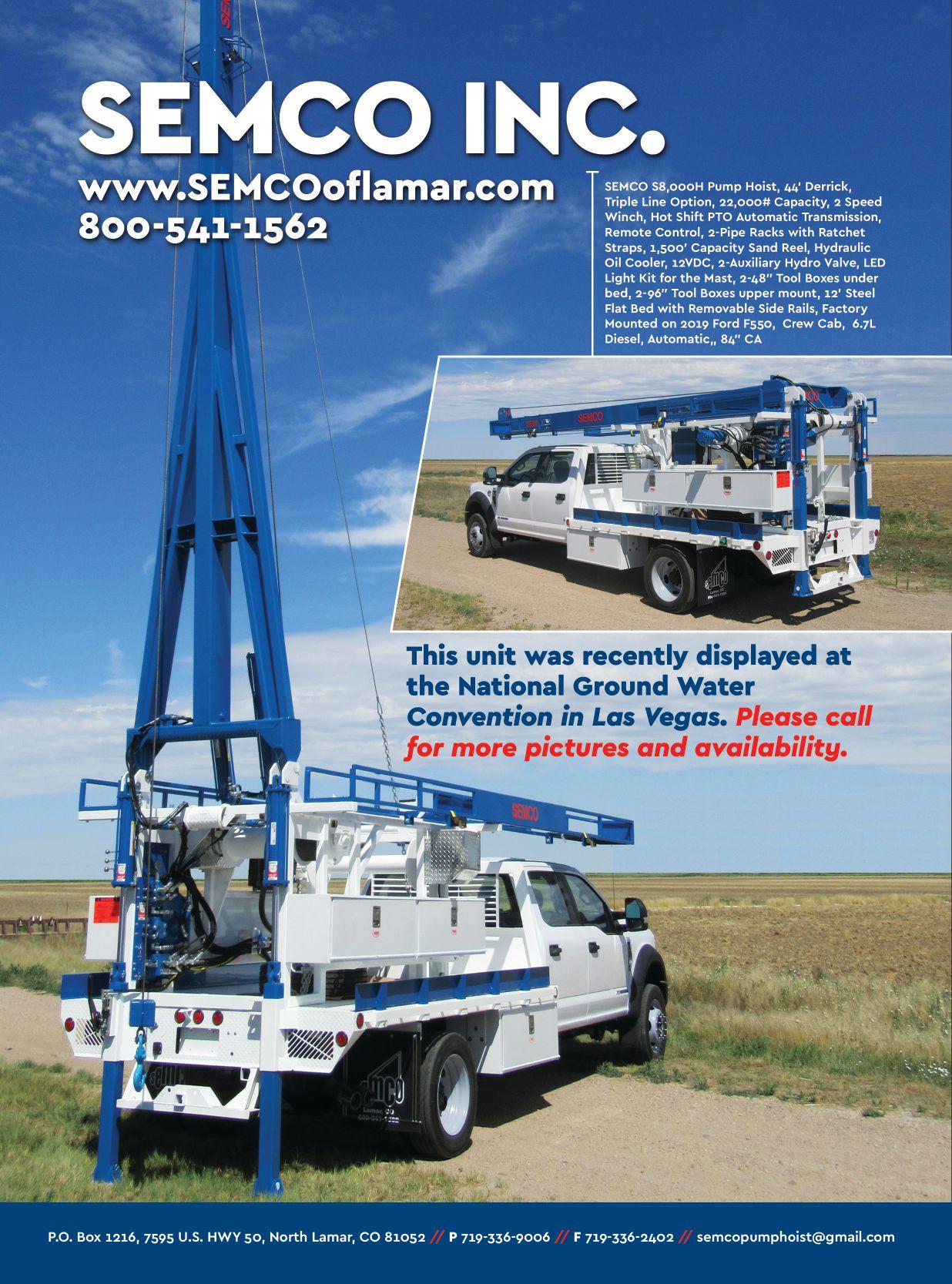




Well water systems tend to operate out of sight and out of mind. However, when your home well water system fails, the sense of urgency can reach crisis levels.
Pentair Pentek Defender with Pentair Link2O* technology is built to keep your home protected during the most critical times.
� Connect to the Pentair Link2O app for round-the-clock monitoring of your water system
� Confidently view status of your system knowing its protected with advanced defense technology
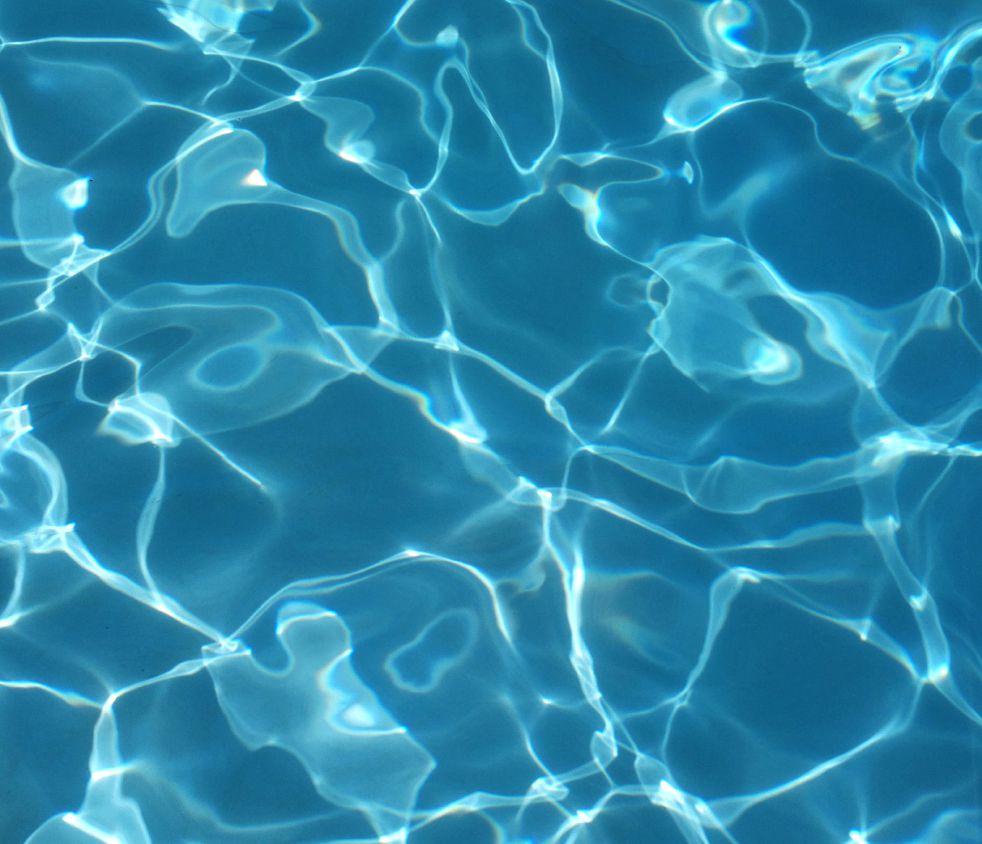
� Receive timely alerts and notifications for common well water system problems
Peace of Mind. Visit pentair.com/pentek-defender




Annex Publishing & Printing Inc. P.O. Box 530, Simcoe, Ontario N3Y 4N5 (800) 265-2827 or (519) 429-3966 Fax: (519) 429-3094
Editor | Colleen Cross ccross@annexbusinessmedia.com (519) 428-3471
Advertising Manager | Sharon Kauk skauk@annexbusinessmedia.com (519) 429-5189, (888) 599-2228, ext 242
Account Coordinator | Mary Burnie mburnie@annexbusinessmedia.com (888) 599-2228 ext 234
Media Designer | Emily Sun esun@annexbusinessmedia.com
Group Publisher/VP Sales | Martin McAnulty mmcanulty@annexbusinessmedia.com
COO | Scott Jamieson sjamieson@annexbusinessmedia.com
Publication Mail Agreement #40065710. RETURN UNDELIVERABLE CANADIAN ADDRESS TO CIRCULATION DEPARTMENT, P.O. BOX 530, SIMCOE, ON N3Y 4N5 e-mail: subscribe@groundwatercanada.com
Printed in Canada, All rights reserved. Editorial material is copyrighted. Permission to reprint may be granted on request. ISSN 0383-7920
Audience Development Manager Urszula Grzyb ugrzyb@annexbusinessmedia.com 416-510-5180
Circulation
ugrzyb@annexbusinessmedia.com
Mail: 111 Gordon Baker Rd., Suite 400, Toronto, ON M2H 3R1 Tel: 416-510-5180
Fax: 416-510-6875 or 416-442-2191
Subscription Rates
Canada - 1 Year $21.00
U.S.A. - 1 Year $60.00 CDN
Annex Privacy Officer: Privacy@annexbusinessmedia.com Tel: 800-668-2374
Occasionally, Ground Water Canada will mail information on behalf of industry-related groups whose products and services we believe may be of interest to you. If you prefer not to receive this information, please contact our circulation department in any of the four ways listed above.
Serving the Canadian Ground Water industry for 46 years.

Beyond the regulations, several factors come into play when positioning a well 12 FINANCIAL SUPPORT FOR BUSINESSES DURING COVID-19
An expert’s roundup of government compensation measures
Find out what’s happening in the Ontario Ground Water Association

In dual interviews, Darrell and Arthur Jefferson of DJ’s Well Drilling in Nova Scotia share their thoughts on drilling


The City of Brandon, Man., is proactively sequestering a crew of workers at its water treatment plant to help ensure the community has clean drinking water throughout the COVID-19 outbreak. .
NASA researchers have developed new satellite-based, weekly global maps of soil moisture and ground water wetness conditions and oneto three-month international forecasts.
www.groundwatercanada.com

by Colleen Cross
On March 1, this industry’s top challenge was, arguably, finding and keeping good employees. By March 31, it was reacting to and weathering the COVID-19 storm. When the seriousness of this pandemic became clear, our world quickly turned upside down. Business has slowed for many and the worst part is we don’t know when things will get back to something like normal.
We know only it will be a new normal where we take nothing for granted.
field and, for that matter, online. Customers, employees and suppliers all need to know what you are doing to keep them safe and stop the spread of COVID-19.
Businesses can’t take for granted that people know and trust their standards of cleanliness and physical distancing
An interesting thing happened in response to the pandemic: provinces and territories, one by one, issued restrictions on business operation. Each posted a list of services deemed essential and these vary depending on where you are in Canada. Drinking water is not named explicitly on several of the lists, but rather under broader categories such as construction. What is striking is not only how different they are from one another but also how vague they are about water. This suggests either that water is not valued highly enough or it is valued so highly that people take it for granted to be essential – and therefore not worth spelling out clearly. Either way, ground water has a PR problem. Communication is so important right now. This includes keeping your team and your customers updated on cleaning, safety and physical distancing measures. It also includes taking every chance to educate the public about the process that brings them drinking water. Businesses can’t take for granted that people know and trust their standards of cleanliness and physical distancing and the responsibility they take for employee safety. I’ve heard members of the public say they won’t patronize a business that doesn’t have specific measures in place to meet provincial and federal guidelines –and clearly communicated in the office, in the
In this edition, we look at some of the programs started by the federal government to provide some financial relief to businesses. In The Source the Ontario Ground Water Association offers some solid ideas for making the most of what may be a slow time for many businesses. Next issue, we’ll bring you an in-depth look at how the pandemic is affecting the ground water industry.
Although it’s difficult to look ahead right now, think of this: All the thought and effort you’re putting into your business now – increasing marketing and communications, updating your best practices and putting long-term plans in place, being a better leader – will serve you well in the long run. The impact of social distancing will be with us for months, if not years.
Before we sign off, an important note about the industry: In May you will receive a national survey of contractors via eblast and enewsletter. Please take 10 minutes to participate in this important poll to help create a clear picture of this industry’s priorities and challenges.
And a note about this issue: Ground Water Canada has been able to include limited COVID19 coverage, but please keep in mind that, as we go to press, pandemic measures are changing daily. Please write or call us to share your experiences and ideas, and visit groundwatercanada.com for regular news updates, articles and ideas.
At this most stressful time, be well, be hopeful, be good to others and be good to yourselves.



The members of Canada’s water well industry, the drillers and pump installers, are contractors who face many unique challenges – from finding and keeping reliable employees to weathering the shift in demand from rural to municipal water systems to pricing your jobs effectively, to battling COVID-19. To better understand and speak to the state of the industry, we need your input.
Ground Water Canada has launched its first national survey of Canadian Ground Water Professionals. We are taking the pulse of the industry on issues that matter to you and we want your input. Your response will be completely anonymous, shared only as collective data, and your participation will help us build a clear picture of this dynamic industry, advocate for change, write articles and provide information to you tailored to your needs.
As the Canadian National Ground Water Association (CNGWA) takes shape, understanding this industry’s needs is more important than ever.
We know it’s a challenge out there, and we want to hear from you. Please take 10 or so minutes to carefully complete this survey. It will come to you in a special eblast and through our enewsletter. In appreciation of your participation, you will be entered into a draw to win a $100 Visa Gift Card.
The survey will close on May 31, 2020.
Watch for the results of this unprecedented national survey in a future issue of Ground Water Canada.
Following the advice of the Chief Medical Officer of Health, the Ontario government, as of April 4, reduced the list of businesses classified as essential and ordering more workplaces to close, including non-critical construction that had previously been allowed to continue.
This measure is necessary to prevent the spread of COVID-19 and protect the health of the people of Ontario, while ensuring that necessary goods and services remain available, the premier said in a news release.
The government is ordering all businesses not covered by the updated Emergency Order to close effective as of Saturday, April 4, 2020, at 11:59 p.m.
This closure was to be in effect for 14 days, with the possibility of an extension as the situation evolves. As for construction, only critical construction projects will continue, including industrial projects such as refineries and petrochemical plants and infrastructure projects such as new hospitals, roads and bridges. New starts in residential projects will stop, while residential construction that is near completion will continue.
As a temporary measure the Ontario government revised the list of essential businesses on April 3. The updated list directed additional businesses to close and restricts specified businesses to providing services by alternate methods such as curbside pickup and delivery, except in exceptional circumstances. This includes stores that sell hardware products, vehicle parts and supplies, pet and animal supplies, office supplies and computer products and repairs and safety supplies.
“We have now reached a critical time in our fight against COVID-19.” said Christine Elliott, deputy premier and minister of health. “Every step taken by the province and every effort made by each of us to avoid close contact with others are the key to our success as a province to stop the spread of this virus.”
The government put in place additional measures to protect frontline workers in essential businesses by adding more than 60 special consultants and officers and doubling the number of phone agents at its Health and Safety Call Centre to 50 to make it easier for workers to report safety concerns.
Canadian ground water expert John Cherry has received the Stockholm Water Prize 2020 for discoveries that have revolutionized our understanding of ground water vulnerability.
Dr. Cherry’s research has raised awareness of how ground water contamination is growing across the world and has led to new, more efficient methods to tackle the problem. He is a leading authority on the threats to ground water from contamination and the creator of the academic field contaminant hydrogeology, which studies the leaching of chemicals and waste, said a news release from the Stockholm International Water Institute.
A geological engineer by training, he pioneered highly collaborative field experiments and new systematic approaches to monitor, control and clean up contaminated ground water. This provided keen insights into contaminant transport processes and made it easier to protect ground water.
In its citation, the nominating committee said: “With the Stockholm Water Prize, John Cherry is recognized for his contributions to science, education, practice and for translating his well-earned stature into a passionate and highly effective advocacy for ground water science to inform current and future policies, laws and collective deliberations that governments must establish to protect water, our most essential and yet most imperilled resource.”
John Cherry is an adjunct professor at the University of Guelph, director at the university’s Consortium for Field-Focused Groundwater Research and associate director of the G360 Institute for Groundwater Research.
The prize is awarded by the institute in co-operation with the Royal Swedish Academy of Sciences and will be presented at a ceremony on Aug. 26 in Stockholm.
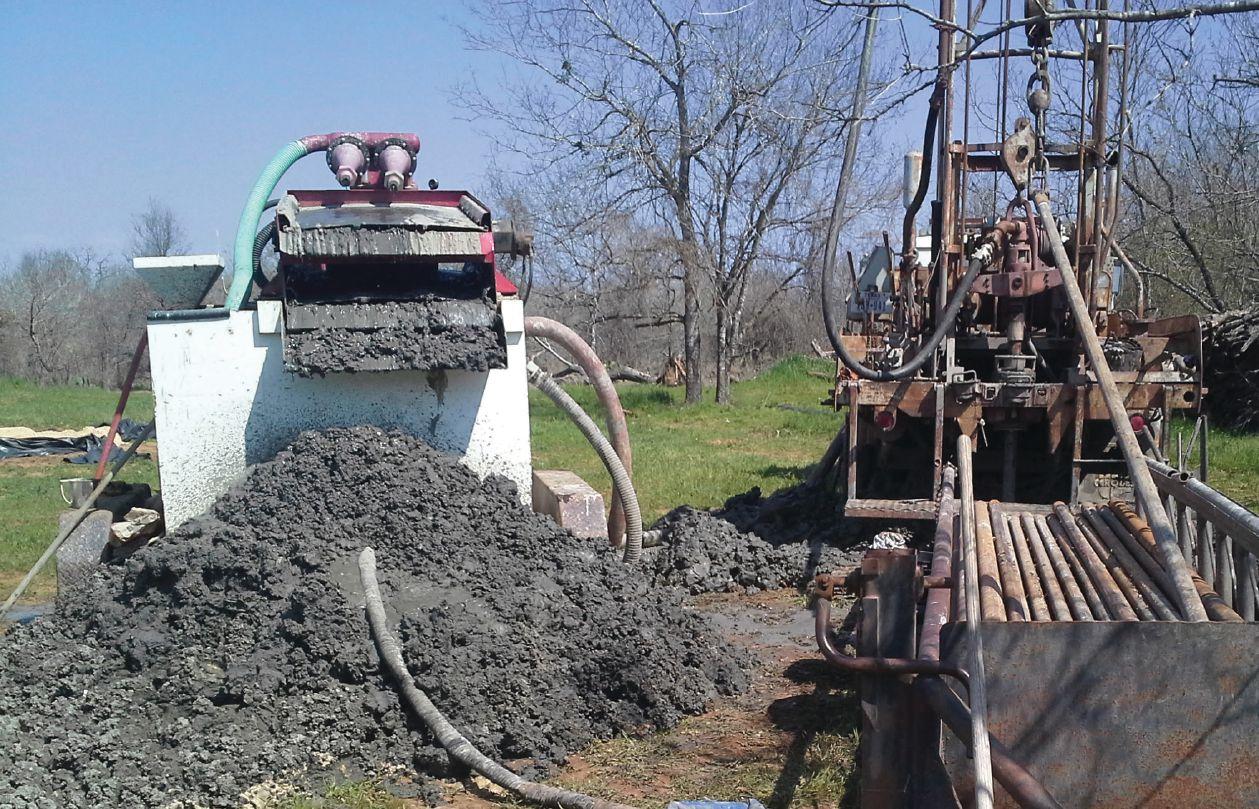


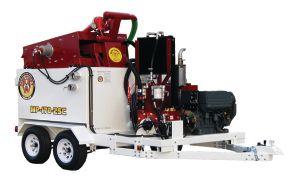
Pick up and clean up to 350 GPM. Built with with a 118 Pump— Chrome with Mechanical Seal.



Pick up and clean up to 500 gpm @ 200 psi, with a 250 Pump and 118 Pump—Chrome with enhanced Mechanical Seal.

Pick up and clean up to 500 GPM. Built with with a 118 Pump—Chrome with enhanced Mechanical Seal.




The MudPuppy® was designed to efficiently remove rocks and sand from drill mud, making the mud and jobsite cleaner. With clean mud the problems of wear and tear on the mud pump, drill string, and other parts are reduced dramatically. The hole is cleaner with less wall cake, making for a more productive well.
Each MudPuppy® is outfitted with a high wear CHROME centrifugal pump. Chrome ensures a longer life with higher RPM.

Researchers at Cranfield University in the U.K. are working on a new test to detect SARS-CoV-2 in the wastewater of communities infected with the virus.
The wastewater-based epidemiology (WBE) approach could provide an effective, rapid way to predict the potential spread of COVID-19 by picking up on biomarkers in feces and urine from disease carriers that enter the sewer system.
Rapid testing kits using paper-based devices could be used on-site at wastewater treatment plants to trace sources and determine whether there are potential COVID-19 carriers in local areas.
Dr. Zhugen Yang, lecturer in sensor technology at Cranfield Water Science Institute in the U.K., said: “In the case of asymptomatic infections in the community or when people are not sure whether they are infected or not, real-time community sewage detection through paper analytical devices could determine whether there are COVID-19 carriers in an area to enable rapid screening, quarantine and prevention.
“If COVID-19 can be monitored in a community at an early stage through WBE, effective intervention can be taken as early as possible to restrict the movements of that local population, working to minimise the pathogen spread and threat to public health.”
Recent studies have shown that live SARS-CoV-2 can be isolated from the feces and urine of infected people and the virus can typically survive for up to several days in an appropriate environment after exiting the human body.
The paper device is folded and unfolded in steps to filter the nucleic acids of pathogens from wastewater samples, then a biochemical reaction with preloaded reagents detects whether the nucleic acid of SARS-CoV-2 infection is present. Results are visible to the naked eye: a green circle indicating positive and a blue circle negative.
“We have already developed a paper device for testing genetic material in wastewater for proof-of-concept, and this provides clear potential to test for infection with adaption,” Dr. Yang added. “This device is cheap (costing less than £1) and will be easy to use for non-experts after further improvement.
“We foresee that the device will be able to offer a complete and immediate picture of population health once this sensor can be deployed in the near future.”
Paper analytical devices are easy to stack, store and transport because they are thin and lightweight, and can also be incinerated after use, reducing the risk of further contamination.
Citation: Kang Mao, Hua Zhang, Zhugen Yang. Can a Paper-Based Device Trace COVID-19 Sources with Wastewater-Based Epidemiology? Environmental Science & Technology, 2020; DOI: 10.1021/acs.est.0c01174
In response to the pandemic, provinces and territories have issued restrictions on business operation. Each has posted a list of services deemed essential and these vary depending on the jurisdiction. Drinking water is not named explicitly on several of these lists. Consult your provincial association and specific provincial and territorial websites for official and up-to-date information.

Provinces where all non-essential businesses must close:
Newfoundland and Labrador: https://www.gov. nl.ca/covid-19/closures/
Ontario: https://www.ontario.ca/page/list-essentialworkplaces
Prince Edward Island lists: https://www. princeedwardisland.ca/en/information/health-andwellness/essential-and-non-essential-servicescovid-19
Quebec: https://www.quebec.ca/en/health/healthissues/a-z/2019-coronavirus/essential-servicescommercial-activities-covid19/
Saskatchewan: https://www.saskatchewan.ca/ government/health-care-administration-and-providerresources/treatment-procedures-and-guidelines/ emerging-public-health-issues/2019-novelcoronavirus/public-health-measures/public-healthorders
Alberta: https://www.alberta.ca/restrictions-ongatherings.aspx
Manitoba: https://manitoba.ca/asset_library/en/ proactive/2020_2021/orders-soe-04132020.pdf
Provinces and territories with partial business closures:
British Columbia: https://www2.gov.bc.ca/gov/ content/safety/emergency-preparedness-responserecovery/covid-19-provincial-support/essentialservices-covid-19
New Brunswick: https://www2.gnb.ca/content/ dam/gnb/Corporate/pdf/EmergencyUrgence19.pdf Northwest Territories: https://www.iti.gov.nt.ca/en/ covid-19-information
Nova Scotia: https://novascotia.ca/ coronavirus/#alerts
Yukon: https://yukon.ca/en/health-and-wellness/ covid-19/essential-services-yukon-during-covid-19
For more news, including COVID-19 developments, updated regularly, visit groundwatercanada.com.
Drillers know either by instinct or by experience the importance of picking a good place to site a well. The well should be in a flat and dry spot that the rig can get to.
However, there is more than this to siting a well that the driller should be aware of. Regulatory setbacks are present that state where a well should not go, but besides the regulatory requirements several other parameters may be considered.
The setbacks are specified in the water well regulations that exist for most provinces and one should consult those regulations for these setbacks. For instance, Alberta and Ontario require a setback of a well of at least 15 metres from a septic field. Ontario’s Water Supply Wells Requirements and Best Practices has an extensive table (Table 4-3) on information to collect when siting a well.
Items to consider when siting a well can be broken down into four major groups:

Besides a flat and dry spot for the rig when the well is first installed, consideration needs to be made for long-term well accessibility. Property lines should be known before the well is installed; the well might not be accessible if it is placed on an adjoining property (even by mistake) and the property owner is not cooperative on letting someone service a well that supplies another lot. Wells should not be in buildings or near overhead power lines or subsurface utility lines.
While predicting the future is difficult, one must at least keep in mind when installing a new well that the well is likely to be just one of the new installations on a site, and discussion should be had with the site owner on what

by KEN HUGO AND TYLER CRAWFORD
proper consideration of future buildings.
other facilities may be placed on the site eventually. Future landscaping should also be considered – too many wells are partially or entirely buried at sites after the landscapers have completed their work. Wells should have at least 18 inches of stickup and a vermin-proof cap.
Photo 1 shows a well installation with proper setbacks from structures. Photo 2 shows a site where the well was installed without proper consideration of future buildings. This well may need to be serviced in the future and a large rig or service truck will need to back up to the well at some point to, in a best-case scenario, change the pump, or in the worst-case scenario, change the liner, which would be inconvenient at best for this well.
One should also consider that wells may be poorly placed with respect to vehicular operation and the well should be located where it will not be hit or contacted by a motor vehicle, lawn tractor or tractor with a snow blade on it when its buried in snow.
As was previously discussed, setbacks from septic fields are in regulations. Other sources of contamination are often present, such as fuel tanks, manure storage, fertilizer or pesticide storage and road salts.
A scenario in Alberta developed in an area of numerous relatively small lots. Although setbacks between wells and septic fields on the lots themselves were often maintained, in frequent cases wells on one lot were found to be close to septic fields on another lot. Although it can be hard to discover what is going on

in neighbouring properties, one should be aware that contaminant migration does not respect property boundaries.
While no one expects water well drillers to be contaminant hydrogeologists, they are familiar with the strata they are drilling through. Certain types of aquifers, specifically shallow aquifers that have no confining layers above them, are particularly susceptible to contamination. These aquifers, such as those under river gravels, can be quite prolific, but are also susceptible to anything from surface spills to high nutrient loading or bacteria within adjacent streams. Appreciation of these features may require a change in the amount of surface casing to ensure that water from the deepest part of the aquifer is used.
Canada is fortunate in that we don’t have many aquifers that are currently at risk of dewatering. However, it does occur on a local scale – aquifer water levels can be lowered in the vicinity of large supply wells, and efforts to place wells as far away as feasible from large supply wells may be necessary.
Even if water demands from wells in the area is not excessive, other well owners often have concerns (whether realistic or not) that a new well may restrict their water supply. Maintaining as large a distance between water supply wells as possible can go a long way to addressing these concerns.
Re-emergence of wetlands, migration of river channels and extent of flooding are topics beyond the professional judgment of water well drillers, and even hydrologists struggle to accurately determine how far floods may extend or how river channels may migrate. Nevertheless, one should be aware when drilling in a low-lying area, or in proximity to a creek, that although it might be dry (and the landowner may state that they have been on the property for decades and that area has always been dry), future changes may occur that will submerge the well.
Effects of well submergence are beyond the scope of this article, but a well that is under flood waters will at best require disinfecting the well before it can be put back to use. Abandonment of the well and installation of a new well in a higher area may be required.



Model 102 Water Level Meters use narrow cable to measure water levels in tight spaces. The Model 102 Water Level Indicators use the same reliable electronics and reel as the Model 101 Water Level Meters; the use of accurately marked yellow cable makes it a more affordable option. The cable has a tough polyurethane jacket with laser markings each millimeter or 1/100 ft.
Quality Groundwater and
As most drillers are aware, recording the well location with a hand-held geographic positioning system (GPS) device, combined with Google air photos, is a powerful tool for illustrating the location of a well. Google allows for direct importation of well locations onto an air photo by entering the latitude and longitude of the well location. Remember, the Google air photo may be a few years old, and in sites undergoing development the air photo will not accurately depict the site. Additions to the air photo should be made to show recent buildings or roads.
Water wells are long-term installations and by applying proper well-siting techniques water well drillers can ensure their long-term use. As the local drilling contractor, you can provide information on siting issues such that well integrity will be preserved and maintenance and proper well pump installation can be undertaken to ensure the well can last 30-plus years!
Ken Hugo is senior hydrogeologist with Solstice Environmental Management in Calgary. Tyler Crawford is co-owner of Aaron Drilling Ltd. in Foothills, Alta.








The following article discusses COVID-19 financial compensation measures that were put in place by the federal and Ontario governments and banks as of April 10, 2020.
by BONNY KOABEL, CPA, CGA
These measures may have changed and additional financial compensation may have been added since this date. Please see groundwatercanada.com for updated COVID-19 financial compensation measures.
To fully benefit from the compensation, it is recommended that you review this information with your accountant or bookkeeper.
Wage subsidy of up to 75 for existing employees if sales significantly decreased The government has introduced a 75 per cent Wage Subsidy to all qualifying businesses in order to help prevent mass layoffs. The temporary wage subsidy covers 75 per cent of gross T4 Wages up to $58,700 annually which results in a maximum of $847 per week.
There are three distinct eligible subsidy periods. In order to qualify a company’s 2019 to 2020 sales for March, April and May must have significantly decreased. For March, sales must have decreased at least 15 per cent and in April and May sales must have decreased at least 30 per cent. Companies apply for the wage subsidy for the eligible periods they qualify for only.
The program will be in place for 12 weeks. It is retroactive to March 15, 2020, and ends on June 6, 2020. Important: The online portal to apply for the wage subsidy will not be available for two to five weeks. Companies will still need to meet payroll during this time period.
For more information on the wage subsidy program see:
https://www.canada.ca/en/departmentfinance/economic-response-plan/covid19-businesses.html#wage_subsidies
If your company does not qualify for the 75 per cent wage subsidy, it can still apply for the 10 per cent Wage Subsidy Program. The 10 per cent wage subsidy is calculated on remuneration paid to T4 employees during that eligibility period – March 18, 2020, to June 19, 2020 – up to a maximum subsidy of $1,375 per employee and $25,000 per employer. In order to claim the 10 per cent wage subsidy, employers deduct the eligible subsidy amount from payroll tax remittances that are made to the government. While the payroll tax remittance is made up of CPP, EI and tax, the wage subsidy is deducted from the tax portion of the remittance only.
If a company has not already made the wage subsidy deduction from their payroll tax remittance they can make the deductions from any future remittances; however, they should keep their backup in the event of a future audit.
If your company does not qualify for the 75 per cent wage subsidy, it may qualify for the EI Work Sharing Program, which provides EI benefits to workers who agree to reduce their normal working hours as a result of developments beyond the control of their employers such as COVID-19.
Under the EI work sharing program, employees agree to work a reduced number of hours per week and are compensated by EI for those reduced hours. The federal government is extending the eligibility to 76 weeks, easing eligibility requirements and streamlining the application process.
Employers cannot use both the 10 per cent wage subsidy and the EI work sharing program for the same employee. They must choose which program they wish to use for each employee.
Under the EI Work Sharing Program, employees agree to work a reduced number of hours per week and are compensated by EI for those reduced hours.
For more information on the EI work sharing program see: https://www.canada.ca/en/employmentsocial-development/services/work-sharing.html
The Canada Emergency Business Account is now available and offers small businesses a $40,000 interest-free line of credit for up to three years. In order to apply see your bank’s website or your online bank account.
Business Credit Availability Program (BCAP) ensuring businesses have access to credit
The Business Credit Availability Program (BCAP) will allow the Business Development Bank of Canada (BDC) and Export Development Canada (EDC) to provide more than $10 billion of additional support, largely targeted to small and medium-sized businesses. Relief measures include:
• Working capital loans of up to $2 million
• Flexible repayment terms, such as postponement of principal payments for up to six months
• Reduced rates on new eligible loans In order to qualify, contact your bank
and they will need to make a referral to BDC or EDC.
BDC contact information: www.bdc.ca/ en/contact_us/pages/default.aspx
EDC contact information: www.edc.ca/ en/contact-us.html
The Canada Revenue Agency will allow all businesses to defer until after Aug. 31, 2020, the payment of any income tax amounts that were owed as of March 18, 2020, and before September 2020. This
relief would apply to tax balances due as well as instalments.
Penalties and interest relief on corporate tax, HST and payroll tax
Penalties and interest relief applies to any penalties and Interest charges that your company receives on HST, payroll and corporate taxes late payments due to extraordinary business circumstances such as COVID-19.
To learn more, go to: www.canada.ca/ en/revenue-agency/services/about-canada-

revenue-agency-cra/complaints-disputes/ cancel-waive-penalties-interest.html
Canada Emergency Response Benefit
The Canada Emergency Response Benefit opened on April 6, providing a taxable benefit of $2,000 a month for up to four months. Funding is available for any self-employed workers who are forced to stop work as a result of COVID-19 and do not have access to paid leave or other income support. Qualifying candidates must have earned at least $5,000 in income in 2019.
In order to provide greater flexibility to Canadians who may be experiencing hardships during the COVID-19 outbreak, the Canada Revenue Agency will defer the filing due date for the 2019 tax returns of individuals. The CRA encourages individuals who expect to receive benefits under the Goods and Services Tax Credit (GSTC) or the Canada Child Benefit not to delay the filing of their personal tax return to make sure their benefits for the 2020-21 tax year are properly determined.
The CRA will allow all taxpayers to defer, until after Aug. 31, 2020, the payment of any income tax amounts that become owing on or after today and before September 2020. This relief would apply to tax balances due as well as instalments. No interest or penalties will accumulate on these amounts dur-
Need information about financial measures that can help your business during these turbulent times? Bonny Koabel CPA, CGA, of AKR Consulting Canada in Mississauga, Ont., has provided several useful links for businesses across Canada. Great source for COVID-19 for all provinces: www.cfib-fcei.ca/en/small-business-resources-dealing-covid-19#webinar
Alberta – www.alberta.ca/covid-19-support-for-employers.aspx
British Columbia – www2.gov.bc.ca/gov/content/safety/emergency-preparednessresponse-recovery/covid-19-provincial-support?utm_campaign=20200319_GCPE_AM_ COVID_6_NOTIFICATION_BCGOVNEWS_BCGOV_EN_BC__NOTIFICATION
Manitoba – www.gov.mb.ca/covid19/infomanitobans/workplaces.html
New Brunswick – www2.gnb.ca/content/gnb/en/gateways/for_business/covid19.html
Newfoundland – workplacenl.ca/article/coronavirus-disease-2019-covid-19/ Northwest Territories – www.iti.gov.nt.ca/en/covid-19-information-businesses-tourists-and-program-applicants
Nova Scotia – novascotia.ca/coronavirus/#support
Nunavut – There are no confirmed cases to date. No business relief measures have been posted as yet.
Ontario – budget.ontario.ca/2020/marchupdate/action-plan.html#section-4
Prince Edward Island – www.princeedwardisland.ca/en/topic/for-business
Quebec – www.quebec.ca/en/health/health-issues/a-z/2019-coronavirus/ www.cfib-fcei.ca/en/advocacy/employment-and-labour/quebec-covid-19-relief-measuresfor-your-business
Saskatchewan – www.saskatchewan.ca/government/news-and-media/2020/ march/20/covid-19-financial-support
Yukon – yukon.ca/en/covid-19-support-yukoners
ing this period.
To read the entire federal government announcement, visit www.canada.ca/en/ department-finance/economic-responseplan.html

Bonny Koabel CPA, CGA, is president of AKR Consulting Canada, a Mississauga, Ont., firm specializing in government grants, subsidies, tax credits, refunds and rebates since 2003.



Hello, everyone.
What a difference a few weeks makes. I hope all of you are keeping safe and healthy, and are doing what you can despite the changing and difficult situation in which we find ourselves. The OGWA went from finishing up our series of regional meetings and completing last-minute details for our Lake Rosseau annual general meeting event to the whirlwind that is COVID-19.
First and foremost, please continue following all of the Health Canada guidelines, including physical distancing, hand washing and avoiding unnecessary outings away from home. We all know how important it is to keep our staff, our customers, our suppliers, our families and ourselves safe.
Having been designated an essential industry by the Province of Ontario (with some important qualifications, see the Executive Director’s Report on page 2), we are able to continue to provide for our customers. There are numerous measures that we can take to be safe: make sure you are implementing them! Many of these safety protocols have been sent to you from the OGWA over the past few weeks, either directly, or in a link to our partners’ information.
The OGWA’s partnership with the Canadian Federation of Independent Business has borne fruit in these difficult times. They are an incredible resource for everything COVID- 19. Health tips, physical distancing practices, employee safety on service calls, protocols for getting/receiving supplies and materials, and many other resources are available on the CFIB website.
These times may also be difficult on the economic and business management side of things. The CFIB has resources to help there as well, with information about government relief/aid packages, wage subsidies, access to credit and employment insurance concerns. Our members should definitely be taking advantage of, and seeing the value in, their free membership to the CFIB
through their membership in the OGWA. Despite these difficult times, the OGWA board of directors and staff have been working overtime to keep up with the rapidly changing landscape. On March 12, the board convened an emergency conference call to address the issue of our AGM event. With a heavy heart we decided to postpone the event. It was definitely the right thing to do, and in the end, it would have been required by the Province anyway. As always, our board is striving to make decisions with the best interests of our members and industry at the forefront. We also look forward to working with the JW Marriott Lake Rosseau to schedule a future event, whether later this year or in years to come.
The pandemic introduced many other issues that the board and staff have been diligently working to solve on your behalf. There have been multiple conference calls and more emails and phone calls than we can count.
Our executive director, Craig Stainton, was in contact with the Minister of the Environment’s office prior to the announcement of the essential services designation. The OGWA was pushing for our industry’s inclusion on that list. Our inclusion as an essential service was in line with the supporting documentation the OGWA provided and in keeping with similar designations for our industry in other countries.
Craig has also been communicating with the ministry’s staff with regards to continuing education credits. We are working with the ministry to deliver an electronic version for those who had planned on taking the course in Minett at our AGM weekend event. Registrants who needed those credits to meet their licensing requirements have also been given a grace period to complete their
Proceeding safely and positively
A flowchart to help you navigate government financial relief measures
OGWA membership application
Time to apply or renew!
Key points and resources
CFIB resources
Our partner, the Canadian Federation of Independent Business, has many resources to help you

PUBLISHED FOR THE ONTARIO GROUND
WATER ASSOCIATION
750 Talbot St., St. Thomas, ON N5P 1E2
Phone: 519-245-7194
Fax: 519-245-7196
Email: ogwa@ogwa.ca
ADVERTISING: Jennifer Hudson
Administrative Assistant
Phone: 519-245-7194, ext.101 Fax: 519-245-7196
Email: admin@ogwa.ca
EDITOR: K.C. Craig Stainton, Executive Director
Phone: 519-245-7194, ext. 103 Cell: 519-282-0063
Email: executivedirector@ogwa.ca
EXECUTIVE
MATT WILSON President
DWAYNE GRAFF 1st Vice-President
KYLE SMITH 2nd Vice-President
STEPHEN BLEIZEFFER Treasurer/ Secretary
BRYAN WATSON Past President
DIRECTORS
BILL BEATON
Lotowater Technical Services Inc. 519-442-2086 Fax: 519-442-7242
STEPHEN BLEIZEFFER
Lackner McLennan Insurance Ltd. 519-579-3330 Fax: 519-579-1151
PAUL CONRAD
Conrad Well Drilling Ltd. 705-378-9578
DWAYNE GRAFF Well Initiatives Ltd. 519-846-8289 Fax: 519-846-8281
BRUCE HIETKAMP
GeoKamp Limited 905-825-8007 Fax: 905-825-9006
DON HSU
Morrison Environmental Limited 905-564-8944 Fax: 905-564-8952
TROY HUGHSON
Ontario Water Well Fracturing 705-641-0198
ROBERT MARTINI
Canadian Pipe & Pump Supply Ltd. 416-244-6476 Fax: 416- 241-2022
JEFFERY MCCRACKEN Franklin Electric 647-641-2178
KYLE SMITH
Aardvark Drilling Inc. 519-826-9340 Fax: 519-826-9108
BRYAN WATSON
Hart & Sons Well Drilling Ltd. 705-887-3331 Fax 705-887-4788
MATTHEW D. WILSON
J.B. Wilson & Son Well Drilling Ltd.
519-639-9988 Fax: 519-269-3552
EXECUTIVE DIRECTOR’S REPORT
It would seem the world has tipped, and we are all just that much closer to the edge!
Some of you may, but I certainly never would, have predicted we would be here, where we are today. Just a month or so ago the world was familiar – perhaps boringly familiar – and then came COVID-19 and this massive shake-up we are left to endure.
The virus began to spread in late December and was mostly contained in China. Over the past three months it has touched 100 countries and transformed Europe and the world. Scientists have not yet determined exactly how this new coronavirus first infected humans, but it is believed it unfolded in a chain of events. The virus is closely related to known bat viruses. How it got to infect humans is still a mystery, whether directly or as a zoonotic infection and crossing species, it has become a big deal. Spreading and, in certain cases, dangerous. It’s not the most contagious infection: there are lots of other diseases that are much more contagious but because there’s a lack of immunity in the population we see widespread transmission. It is believed global modernization played a role in the spread. With more and more people moving around the world, we can see spread does not take long. It is also believed many undocumented infections were already circulating long before China and others moved to heighten control and restrict travel in late January. “These undetected cases seem to have been less contagious than the detected ones,” said Ashleigh Tuite, an epidemiologist at the University of Toronto School of Public Health. “But because there were so many, their overall contribution to the spread was substantial.” Without effective measures to slow down the spread, COVID-19 will spread for months, experts believe.
So here we are, “doing our bit” as they said during World War II. We should all be staying home except for essential service work, social distancing, avoiding assembled groups and washing our hands as often as possible. Don’t forget to sneeze or cough into your sleeve or a tissue and to wipe any suspicious (or unknown) surfaces with a disinfectant. Do your bit.
We are left with a labyrinth of new social do’s and don’ts and professional do’s and don’ts, which are then coupled with the provincial and federal programs put into place to help us through these challenging times. All these new additions to our lives can pose quite a challenge to remember, let alone execute.
Where does one begin? Where does it end? What a mess!
We have done our best to set you up with a basic guide to the programs available via links in our emails and in the Members Login section of our website. As it would happen, we are in the process of changing our database, which will also change our website. This will add some extra complications for us all. Hang in there, and if you have any questions, suggestions or comments let us know.
We have done our best to be cognizant of not bombarding you with email blasts and information. We’ve tried to limit our email blasts to once a week with new or updated information. Certainly, ever-changing programs and requirements have been a big part of Canada’s and Ontario’s COVID-19 response as governments react to the pandemic. We have tried to prequalify things for you and certainly welcome questions and comments you may have. We are here to help you in any way we can. We (the OGWA staff) are working from our homes and I believe we have most of the wrinkles worked out of that now and can serve you as effectively as ever.
Your OGWA executive committee and the full board are continuing to meet by conference call, and we are exploring web-based programs that will work for all board members. We have certainly been able to identify challenges in bandwidth, that is for sure.
As you know, our convention/AGM and the final continuing education course for this year, which were to have been held in Minett on March 27 and 28, had to be postponed
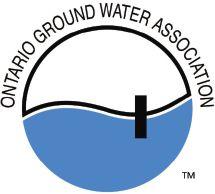
EMPLOYED & RECENTLY EMPLOYED
QUALIFY FOR EI?
CAUSE OF LEAVE?
REGULAR EI BENEFITS
• Taxable payments equal to the lower of $573 and 55% of average weekly earnings.
• Payments received for 14 and up to 45 weeks
Applications can be made through:
https://www.canada.ca/en/s ervices/benefits/ei.html
1-800-531-7555 EI SICKNESS BENEFITS
• Taxable payments equal to the lower of $573 and 55% of average weekly earnings.
• Payments received for a maximum of 15 weeks.
• Waiting period of 1 week has been waived.
Applications can be made through:
https://www.canada.ca/en/ser vices/benefits/ei.html
1-800-531-7555
SELF EMPLOYED & CONTRACTORS
QUALIFY FOR EI?
OTHER:
• Those who are currently receiving EI do not apply for CERB
• If EI benefits run out before October 3, 2020, Individual may be eligible to apply for CERB
• Those who have applied for EI and their application have not yet been processed – do not apply.
• Post CERB- those who received and are still qualified for EI may apply.
CANADA EMERGENCY RESPONSE BENEFITS (CERB)
• If you have stopped working because of COVID19, the Canada Emergency Response Benefit (CERB) may provide you with temporary income support. The CERB provides $500 a week for up to 16 weeks.
Eligible Workers:
• Employed, self-employed or contractors unable to work for at least 14 consecutive days due to sickness, quarantine, job loss, no available work, caring for sick family or children at home due to school and daycare closures.
• Canadian resident over 15 years of age.
• Earned income of $5,000 or more in 2019 or 12 consecutive months before application.
Applications can be made through:
• CRA MyAccount
• CRA MyService Canada Account
• Phone 1-800-959-2019 or 1-800-959-2041
The information provided is strictly presented as a basic guide and the information is referenced to reflect the laws and practices which are subject to change
Payment Arrangements Deadline: January 31, 2020


Golf, Lunch & Dinner Package
Include scart. Shotgun start. Dinner only package available. Individuals and pairs welcome. Lots of fun while supporting your local charity
OGWA SCHOLARSHIP GOLF TOURNAMENT
Conestoga Golf and Conference Centre 400 Golf Course Rd., Conestogo, ON N0B 1N0 www.golfconestoga.ca
Get your foursome ready for a great day of golf at our 4th Annual OGWA Tour nament!

Hello, OGWA members. We have been faced with unprecedented challenges with COVID-19. This is a terrible and deadly virus. I truly hope that all of you and your families have been spared exposure to it.
Key resources around COVID:
The Ministry of Labour, Training and Skills Development has developed a response to those working in construction: www.ontario.ca/page/ construction-site-health-and-safety-duringcovid-19
• Centers for Disease Control and Prevention: www.cdc.gov World Health Organization: www.who.int
• Canadian Centre for Occupational Health and Safety: www.ccohs.ca//oshanswers/diseases/ coronavirus.html
• WSIB: www.wsib.ca/en/novel-coronavirus-covid-19-update
Key points:
• WSIB *may* cover workplace-related COVID-19 positive
• All positive COVID-19 cases must be reported to the Ministry of Labour, Training and Skills Development within four days, in writing. This can be a very difficult situation to navigate for small business, as things change every day/ week. If you need help or guidance, please call me! Please take care of yourselves!
Ellaline Davies is a facilitator, trainer and the president of Safety Works Consulting Inc.
CONTINUED FROM PAGE 1
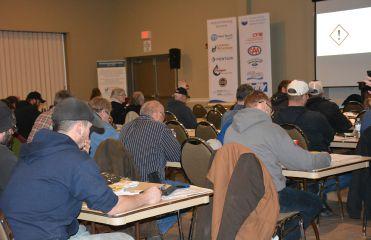

education hours.
The OGWA still needs to hold an annual general meeting to satisfy our legislative requirements as a not-for-profit organization. We are researching our options, with regards to both timing and the nature of the meeting. We may be able to hold the AGM once the social gathering restrictions are lifted, or perhaps we can hold the AGM electronically via mass conference call/video conferencing. More to come on this in the weeks ahead.
Once again, as essential service providers we must be doing all we can to keep ourselves, our customers, our staff and our suppliers safe. Figure out what safety protocols work best for you and your staff and follow them! Consider limiting trips to suppliers and the receipt of deliveries from suppliers (instead of getting a few things three times a week, get a bigger order once every two weeks). Limit contact between field, shop and office staff by setting up zones in your yard/shop/ office workspaces (including bathrooms and kitchen areas). Use safety questionnaires/ procedures for customers (recent travel, fever, physical distancing) before going on a no-water emergency service call. Be creative and communicate your successes to help others.
Once again, you can find resources and regular updates on the OGWA website and through our partnership with the CFIB.
Let’s work together (but at least six feet apart!) to make the best of this difficult situation. I look forward to seeing you all when this is over. Be healthy. Be safe. Be well.

MATT WILSON, President
CONTINUED FROM PAGE 2
(and possibly cancelled). I have had preliminary discussions with the ministry regarding a replacement for the Minett CE course, but the lockdown in Ontario has complicated that process. Similarly, preliminary discussions have taken place on an alternative date and method of hosting our annual general meeting. We will provide you with all the alternative times and dates as they firm up. Once again, any comments or suggestions by members regarding this year’s AGM are most welcome.
Early in the lockdown of Ontario, “Water Well Drillers” were named as essential services on the province’s list. In the ensuing list where the Province limited some construction activities, that entire area of the list was rewritten. In the rewrite, “water well drillers” and other service providers were removed. The aim of the Province was to curtail “residential construction” that had not had permits drawn prior to April 4, 2020. This affected only wells drilled for residential construction.
Under the “Emergency” and “Supply Chain” aspects of the list, well drillers and pump installers can ply their trade. No one and no industry is to be deprived of potable water. New construction (wells) in support of the “Supply Chain” are allowed. There were a few questions in the beginning, but the frequency has died down, it would appear you have it sorted now. I have only one report of a driller being charged, and it was not for drilling but for “not social distancing” while drilling. Yes, while working, it is expected that social distancing and all health and safety protocols – including masks and gloves – be practised.
For those of you who have a pace that has slowed down, providing you with a bit of time on your hands, may I suggest you spend this freed time on your business, with the things you’ve had little chance to get to over these fast past few years. I expect all of you need to take a good, hard look at your policies and procedures manual. It is easy to forget that, whether you refer to them or not, having these things in writing are requirements of doing business. Now is the perfect time to go through items, make sure you are not missing any, edit and update the ones you have and create the ones you don’t. Similarly, sit down with your invoices covering last year. It is a perfect time, while things are relatively fresh in your mind, to revisit the job. Come up with your actual costs as built, now look at and calculate all those little things that can easily be overlooked. To name a few, did your pricing pay justice to depreciation, all the insurances and replacement costs? How did the fluctuations in the exchange on the dollar affect you in the end? There are a great number of calculations required in setting pricing to maintain profit. Contingency planning is often a huge variable missed in price planning: how will you handle that scenario, that unforeseen “OMG” moment? Is there a little bit built into every job to get you through the job from hell? There should be – it’s part of doing business.
Proceeding safely and positively from here, we will have the opportunity to glean some good out of this situation – the best that we can expect from such a situation.
I draw your attention to the Canadian National Ground Water Association membership application contained herein: please consider becoming a “voting member.” The CNGWA board is in the process of striking a committee to work on the bylaws. If you are interested in being part of the bylaws committee, raise your hand, please. We are stronger together.
In closing I ask that, you stay safe and take care of each other.

CRAIG STAINTON, Executive Director

The Ontario Ground Water Association is proud to announce a new partnership with the Canadian Federation of Independent Business (CFIB), a non-profit, 48-year-old organization supporting small and mid-size Canadian business.
Starting January 1st (or sooner) all OGWA members that are Canadian, privately held companies (not publicly traded) will have access to all of the programs and services that CFIB provides to the 110,000 businesses that are members of the Federation, including:
1. Access to CFIB Savings Programs that typically save members $5000 per year or more, such as:
• “Tier 1” MasterCard interchange rate of 1.27%
• Chase payment processing with the best all-in rates on Visa and Amex
• Up to 50% off ShipTime Courier
• 40% off Payworks payroll services
• PrimaSure employee benefits programs
• 20% of Scotiabank banking services
• Average $1000 savings with Selectcom telecommunication services
• 20% off QuickBooks online
• 50% off CyberImpact automated marketing
• New deal with Telus to be announced shortly
2. Complimentary, unlimited access to CFIB Business Counsellors who can assist with almost any business issue, reducing admin workload and liability risk, especially in the areas of HR & employment standards, dealing with the Canada Revenue Agency, government compliance and regulation. CFIB can replace costly HR services for free!
3. Empowering members to voice their concerns to all levels of government on bottom line issues, and helping our lobbying efforts that save businesses thousands of dollars every year by forestalling and reversing unfair taxation & red tape initiatives.
You will receive a welcome letter shortly from CFIB with your membership number that you need to access all programs & services. CFIB will also be sending you an invitation to a webinar to learn more about the partnership and how you can benefit. If you have questions or require ANY assistance, please call:
Expert advice and support for your business 1-888-234-2232 | cfib@cfib.ca
• Your membership # will remain the same
• Memberships will be renewed through the OGWA
Darrell Jefferson, founder of DJ’s Well Drilling, has been drilling wells in Nova Scotia from his home base in the Annapolis Valley since 1992.
His son Arthur joined him first as an employee when he was in school, then six years ago, when he took over ownership of the company, building on the foundation his father established. Here, in side-by-side interviews, we look at how perspectives on the well drilling industry vary from generation to generation.
WHEN AND HOW DID YOU GET INTO DRILLING?
DARRELL JEFFERSON: I worked for another well drilling company – that started in 1985. Then, in ’92, my father died and left me a little bit of money, and I used that for a down payment on a rig. It wasn’t much money, but I had a couple private investors, and we financed the rig and I never looked back.
ARTHUR JEFFERSON: I was 14 years old, and I found myself with a pickaxe and a shovel, digging trenches. That was my first introduction to the industry. My dad was running a cable tool rig and approached me about digging trenches to bury the waterline in from the well to the house. I was looking to get some cash in my pocket, and I remember asking, “What are you going to pay me?” – Because that’s what everybody wants to know – and he said, “I’ll pay you $100.” So I asked, “Okay, how long is it going to take?” He said, “Oh, it shouldn’t take you more than a couple of hours.” Jeez, I could do the math on that: 50 bucks an hour? I was 14. I was going to be rich! Four days later, the trench was in.
IF YOU HADN’T BECOME A DRILLER, WHAT WOULD YOU HAVE DONE FOR A LIVING?
DJ: I’m a licensed mechanic by trade. I’ve run heavy equipment before, excavators and dozers, but the well drill really took to me. After five years or so [of having my own rig], my mother said to me, “You know, this is as long as I’ve known you keep a job.” And I said, “It’s got to do with who’s the boss. I’m working for a good boss.”
I really enjoy that, being able to pull one out of the hat, every now and then – what some of my friends call ‘hero jobs.’ –Arthur Jefferson
AJ: I had been working summers for my dad, but I started working full time in 2003. I had come out of university, just finished up a degree in sociology, and I had student loans building up. I approached him about coming to work, and I said, “I’m going to do this for a few years, and I’m going to move back to law.” I wanted to go into law and become a lawyer or maybe a teacher. It’s been what, 17 years? Still drilling. I just liked the drilling, more or less.
by CAROLYN CAMILLERI
WHAT DO YOU LIKE MOST ABOUT YOUR DAY-TO-DAY WORK?
DJ: I love the drilling and meeting different people every day and being in a different yard every day. And that was a big thing. I run the rig and I looked at all the work myself and I installed pump systems myself. But after a while, I was drilling too many wells, I couldn’t look after it, and so I hired a couple of guys. I started small and went big.
AJ: It’s always different. There are never two jobs the same. There are never two customers the same. Everybody’s got different needs and different wants, and you’re doing your best to fulfil them. I love the variety. Even with one well, you’ve got different challenges from day to day. And even throughout the day, you’ve got different challenges. And you’ve got different customers, and you get customers that are really appreciative, that you got them water. I really enjoy that, being able to pull one out of the hat, every now and then – what some of my friends call “hero jobs.” You get to be hero for a day.
DJ: The big holes. The big holes are all specialized. You’ve got to work with engineers and hydrologists and, normally, they’re all big companies or towns or villages and federal government.
AJ: I like the larger commercial work

Darrell Jefferson, founder of DJ’s Well Drilling, has been drilling wells in Nova Scotia from his home base in the Annapolis Valley since 1992. His son Arthur joined him first as an employee when he was in school, then six years ago, when he took over ownership of the company.
we do. The ones that are real challenging that not a lot of people want to try. Those ones take a lot of patience, take a lot of time. I’ve been on some pretty tricky ones.
DJ: Most of it’s all done by the foot.
AJ: We price by the foot. Very rarely do we ever give a flat rate. And we have to price by the foot, because, at the end of the day, we’ve got to get paid for what we do. I’ve gone into areas, where the wells were deep, and we came in shallow, and then, I’ve gone into areas where the wells are shallow, and we went deep. You can’t predict what’s going on under there.
The cost of maintenance is not getting cheaper. And I’m a big believer, if you want good help, you’ve got to pay them. And having the manpower. You have to have a network of people around you, to be able to make the calls, to do the work, to drill the wells, to put pumps in, to do treatment. You can’t be in five spots at once, doing five different things. I think that’s one of the things a lot of people miss: you’ve got to charge enough that you can hire the proper people to do this for you. To me that’s the biggest one. Equipment’s number two, but people – your employees – are number one.
DEVELOPED, WHICH SKILLS HAVE SERVED YOU BEST?
DJ: I knew how to electric weld and there’s a lot of electric welding in the well drilling business. And it benefited me every day being a licensed mechanic and knowing how to run heavy equipment.
AJ: Public speaking. Having the confidence to talk to people and not be afraid to voice your opinion in a manner that you’re not closing any doors. When I went to university, that was one of the very first things I did, was get up there and do a presentation. The more public speaking I did, the easier it got. It really prepared me for talking to customers down the road and having that confidence to just be able to look them in the eye and tell them what I think they should do. That helps [customers] feel like, “I trust this guy. He knows what he’s doing, and we’re going to follow it.”
WHAT IS SOMETHING YOU’VE LEARNED FROM YOUR SON, ARTHUR?
DJ: One thing I’ve learned, he’s charging more. He says, “This is what we’re going to charge. You’ve got to make money and you’ve got to bring your prices up.” That’s the biggest thing. For doing house wells, you’ve got to get your price up where you can make money. It’s no good just to break even, because what if you have a major breakdown in your rig? I had my rig back to the States in 2012 and had her totally rebuilt right at the manufacturer and we upgraded. My rig was originally good for 2,400 feet. The engineer said the rig is good for 3,000 feet or a little more, so we did a lot of upgrading to her. They were one day tearing her apart and 12 weeks putting her back together. The engineer, said, “You do your maintenance on her, she should last another 20 years at least.”
AJ: He’d always say, “Boy, never admit defeat. You just keep going.” That’s him to a T. Never, never admit defeat.
WHAT IS THE MOST UNUSUAL OR CHALLENGING JOB YOU’VE WORKED
DJ: In ’91, I was even up in Goose Bay, Labrador, putting down oil recovery wells. Some places up there in Goose Bay they had 17 feet of oil sitting on top of the water. We’d be up there for 21 days straight, then we’d come home for a week. We had to work a minimum of 12 hours a day. Some days we’d work 15-17 hours because there’s nothing else to do.
AJ: I drilled one here, only five minutes from my house, where we had to put in 460 feet of 14-inch casing, then drill a 14-inch hole down to 780 feet, then install an eight-inch casing and screen assembly down to 760. We got the 460 feet of casing in but the casing became structurally compromised and collapsed about 20, 25 feet from the bottom.
We’re nowhere near finished. We can’t call this a well. We got the casing still rigged together. We couldn’t even get a six-inch bit down through it. We went through a lot of money and a lot of patience. We got a drill bit built in Oklahoma, that would ream that casing back up to size. It took me about four days to get that reamed back out, and then, we continued on to finish the well.
The well is going to be operational this year. That was the biggest production. But we did her.









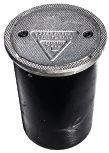
WHAT PART OF YOUR JOB IS MOST STRESSFUL?
DJ: They’re all stressful at times, especially if you get down 500-600 feet and you ain’t got no water. Everything gets stressful then. They get stressed out, we get stressed, and then you say, “Where is that water?”
AJ: Number one’s money. Getting paid. As a business owner, that’s number one. Number two is getting water for people. Being able to find water but doing it in a way you can harness it for them, make a good well out of it. At the end of the day, we have to work within people’s budgets, too, and figure out a way to make it work.
WHAT QUESTION DO YOU GET MOST OFTEN FROM WELL OWNERS?
DJ: How much is it going to cost? We try to give them an accurate cost and, if anything, I like to give them a little bit higher price than what I think it’s going to go, because if you come under, they feel good.
AJ: Usually, once we’re drilling, they’ll ask, “You haven’t found water yet?” I’ll say, “I found it. I know where it is. I just
haven’t got there. It’s not lost.” They look at me like I’m nuts, but you got to be honest to be in this industry. I think that’s part of the problem with our industry: we’re not really trained to deal with those situations. We know our job’s to get water, and we know we need to go deeper, but we have got to explain this to the homeowner. They just see it as a number. Some understand, but most see it as how many thousands it’s going to be.
YOU STARTED?
DJ: The government regulations. You’re regulated to death. They want to tell you what to do and where to do it and the whole nine yards, and they want everybody to be computerized. I don’t even know how to turn the computer on, and I don’t really want to know. And that’s one of the reasons I more or less retired, that you have to be computerized. They want everything sent in over the computer, your well logs and where are you going to go drill on that day and everything. And I said, “No, this is going in the wrong direction for me.”
AJ: The equipment’s getting better. Technology’s come a long ways. Drill bits, they’re getting better. The air hammers, the tooling, the drill rigs, they’re getting more user friendly. I still run an old dinosaur, but I do see how it would be easier with newer equipment. From a government standpoint, our environment department has become nonexistent in terms of policing. We used to have three well inspectors for the province who used to go around and randomly track drillers, and they would catch up with the ones that weren’t doing quality work. But as I was getting licensed, they were doing away with well inspectors. Now they have what they call “inspector specialists.” They don’t have any real background in wells. They’re like a general inspector and can inspect oil tanks, oil spills, septics, gas, anything. So their background’s kind of broader.




PROUDLY SERVING THE GROUNDWATER INDUSTRY SINCE 1992: Lackner McLennan Insurance has made it their business to protect other businesses, and their specialty program for the groundwater industry has been making waves.
PROGRAM DESIGNED FOR:
• Water Well Drilling Contractors
• Pump Installation Contractors
• Geo Thermal Heating Contractors
• Hydro Geologists / Geo Scientists
• Manufacturers / Suppliers
COVERAGES INCLUDE:
• Automobile & Fleet
• Property & Commercial Liability
• Environmental Impairment Liability
• Errors & Omissions (Professional) Liability
• Bonding
Directors & Officers / Employment Practices COVERAGE: A liability program designed to provide you with defense costs arising from an employee dispute or issue with one of the Ministries. (Labour, Environment, Revenue)
STEPHEN BLEIZEFFER 519.579.3330 ext. 311 sbleizeffer@lmicanada.com www.lmicanada.com
DJ: I don’t know what will happen really, but I think it will still survive. And only the smartest will survive, the ones who are making the money. The ones who are working from day to day and job to job, they won’t make it because they won’t be able to keep the gear up and they won’t be able to pay their bills and manpower. You’ve got to be smart, really smart with money, and be able to make money.
I’m concerned that hired help’s going to be harder to get unless we make some changes in the industry. We don’t charge enough for what we’re doing. We live in the lower economy here, but we still need to charge more, in order to hire the people we need and take care of the equipment. If that doesn’t change, I’m not saying the industry will die – the industry will never die – but we won’t progress, we won’t get better. We’ll never take ourselves more seriously, if we don’t get to that point. The younger generation, who are taking over their family business, I think they’re seeing that.
Carolyn Camilleri is a Toronto-based writer, editor, and content strategist. She has been writing for consumer and trade magazines, as well as businesses and organizations, for more than 15 years.

1
2016-12-08 11:22 AM

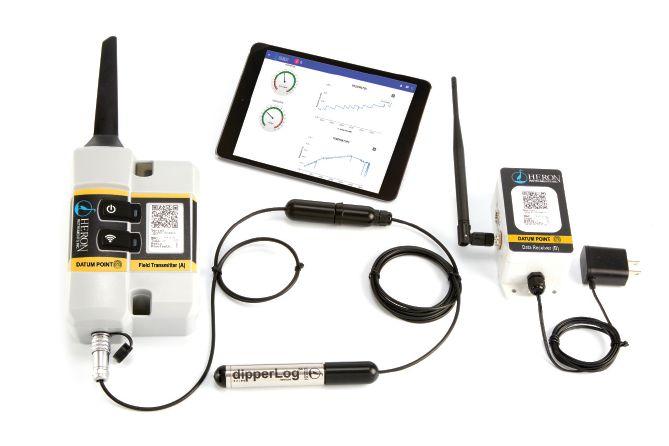

Selection $100.00 Voting Member Donation Payment by Cheque Additional Donation: $______________________ Payment by Credit Card Mail Cheque: c/o CNGWA, 750 Talbot Street, East, Suite 125 St. Thomas, ON N5P 1E2 Credit Card # Expiry Date
Please submit this form to accounts@cngwa.ca If you wish to e-transfer, please contact accounts@cngwa.ca
Benefits of being a member
• National Unity – Have a Voice
• Continuing Education Program coming available to all members
• Many future benefits to unfold
• Have ideas of what you wish to see in our National Association. Let us know
• Sign up now and get a chance to win a Heron Instruments Datum Point Central Control Well Monitoring System complete with data logger (Value $3,000) For further information please contact Craig at executivedirector@cngwa.ca
The 13th edition of the Canadian Truck King Challenge (CTKC) put 2020 mid-size pick-up trucks through their paces. The focused on testing the mid-size truck segment this year.
Why? “Well, we look at what’s happening in the truck world and test what Canadian truck buyers are most interested in as each model year rolls out. And, right now, the mid-size segment is exploding,” said Howard Elmer, founder of the Challenge.
Toyota entered two trucks in the Challenge, with a 2020 Tacoma TRD Sport, which is more of a truck designed for street driving, and a 2020 Tacoma TRD Pro, which is the model’s most off-road capable truck. Both trucks were equipped with a 3.5-litre DOHC V-6 with VVTI, with the Sport being a six-speed manual, and the Pro a six-speed automatic.
General Motors entered its Chevrolet Colorado ZR2 Bison, the most off-road capable
version of the Colorado. It was equipped with a 3.6-litre V-6 DOHC engine mated to an eightspeed automatic transmission.
Jeep entered two versions of its all-new Gladiator truck. One was the Overland version and the other was the Rubicon off-road version. Both were equipped with a 3.6-litre Pentastar VVT V-6 with Stop-Start mated to an eight-speed automatic transmission.
CTKC tests the trucks using real-world situations. Trucks are driven empty, with payload (500-pound barrels) and with trailers (4,000 pounds). The way the trucks would be used in the real world. This year, the Challenge incorporated an expanded off-road course to test each truck’s off-roading capabilities.

by MARIO CYWINSKI
Toyota entered two trucks in the Challenge: the 2020 Tacoma TRD Sport and a 2020 Tacoma TRD Pro. General Motors entered its Chevrolet Colorado ZR2 Bison. Jeep entered two versions of its Gladiator truck.
“This ritual of back-to-back driving over the same 20-kilometre test loop is what makes the Truck King Challenge unique,” Elmer said. “This routine gives each judge a chance to “feel” the differences in each truck as they drive over the same course – again and again. Over two very long days we manage to collectively drive over 2,000 km around this course.
After two days of testing, who was the winner?
The CTKC winner for 2020 was the Chevrolet Colorado ZR2 Bison, and it wasn’t that close, as it won by six points over the runner-up Jeep Gladiator Rubicon. For comparison, the other four trucks were separated by a total of 2.5 points.

Toyota Tacoma TRD Sport had the best for loops with payload, and the Toyota Tacoma TRD Pro won out for towing loops (one caveat is the loggers did not pick up any data for the Tacoma TRD Sport for towing).
With the help of third-party company FleetCarma, CTKC used data loggers to understand real-world fuel economy for all five trucks. A report was created, which showed each truck’s fuel economy while empty, with payload and with a trailer.
The Jeep Gladiator Overland had the best fuel economy for empty test loops,

Overall, the Toyota Tacoma TRD Pro had the best fuel economy for the competition.
While not as popular as their full-size cousins, mid-size pick-up trucks are seeing an increase in interest and sales. As full-size trucks are becoming bigger and bigger, many drivers are turning to midsize trucks to get more of a right-size vehicle.


Mario Cywinski is the editor of Machinery and Equipment MRO magazine, www.mromagazine.com, a member of the Automobile Journalists Association of Canada, and a judge for Canadian Truck King Challenge. He has over 11 years of editorial experience and over 16 years of automobile industry experience, as well as small business industry experience.





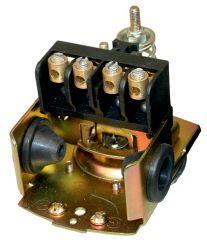









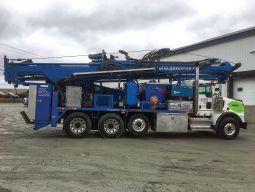

Flomatic has released the Model Cycle Gard IV CB152SST, a new stainless steel direct-acting constant-pressure pump control valve with tappings.
The valve has a flow-efficient globe style and a stainless steel body equipped with a one-inch NPT size female inlet threads and with a one-inch NPT union end female outlet connection. The valve’s standard pressure range is 15- 75 PSI with an optional 15-150 PSI range. The valve body maximum pressure rating is 400 PSI. All of the valve’s internal parts are corrosion resistant with a stainless steel spring and fasteners for long service life.

a press release.
Flomatic’s Cycle Gard IV CB152SST valve regulates high upstream (inlet pressure) to a lower regulated downstream (outlet pressure) constant pressure within a range regardless of water flow. This is accomplished by an adjustable springloaded balancing valve factory set to automatically regulate the downstream pressure to 50 PSI. The regulating pressure is field adjustable in a wide range.
It is equipped with additional NPT tapped bosses for pressure gage, water tank and/ or a pump pressure switch. It maintains a preset operating pressure and reduces rapid pump cycling and is proven protection for wells and booster pumps, the company said in
Lone Star Drills introduces an all-new tracked drill with an automatic SPT hammer for improved accuracy in geotechnical and soil sampling applications. The LSGT+HDA drill is based on Lone Star Drills’ LST1G+HDA. By adding tracks and a remote-controlled feature to the drill, operators can position the

drill in hard-to-reach areas and locations with delicate underfoot, and maintain leveling control with hydraulics.
Lone Star designed the drill to address demand from customers wanting to access remote or environmentally sensitive areas. Public parks, delicate turf, wet or soft soil and other restricted sites often present problems, as the ground can’t be disturbed by a large truck and trailer. The tracked drill can help perform soil sampling or geotechnical testing in those sensitive areas.
The tracks spread the drill’s weight and lower its ground pressure to 3.8 psi, minimizing the risk of damage to the underfoot while completing soil sampling or geotechnical testing in sensitive areas. The tracks also minimize the risk of the drill getting stuck in soft ground conditions.
Hydraulic leveling is another feature new to the LSGT+HDA. Operators can raise the machine until it is level thanks to a cylinder on each corner and a telescoping jack. The ability to individually adjust the corners allows for

operation on uneven ground. Maintaining true vertical hole alignment is critical for accurate SPT results.
The LSGT+HDA allows for precise and easy-to-operate drilling for standard penetration test and soil sampling. The drill comes standard with a 140-pound automatic hammer and is capable of sampling down to 100 feet.
The operator can make simple adjustments to achieve and maintain ideal push-down force when drilling in challenging conditions as a result of the drill’s bypass flow control system. Additionally, an optional anchor kit enables the LSGT+HDA to deliver

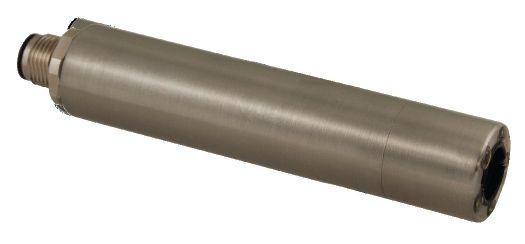

push-down force up to 8,500 pounds, exceeding the weight of the drill rig.
lonestardrills.com

DEBUTS DIPPER-SEE H2GO ILLUMINATED UNDERWATER DROP CAMERA
Heron Instruments Inc.’s new dipper-See H2GO Illuminated Underwater Drop Camera is designed to change the way you see things underwater. The all-in-one inspection camera (1.25 inches wide) can fit in your glove compartment
and record 1080-pixel highdefinition footage for up to 4.5 hours onto the provided 32 GB microSD card.
Simply take the card and put it into a smartphone/tablet or laptop for playback. You can then send the files back to your head office for your records or send before and after footage to your customer showing a job well done.
heroninstruments.com

Merrill Manufacturing Company has announced four new stainless steel insert tees (3/4-inch, 3/4×1 inch, 1-inch,
and 1-1/4 inch) and two new stainless steel insert elbow sizes (3/4-inch and 1×1-1/4 inch).
Constructed of durable 304 stainless steel, these fittings are much stronger and priced about the same as the no-lead brass models. All sizes feature sharp insert barbs, creating a seal you can depend on.
800-831-6962, merrillmfg.com
Grundfos has created WellConnect, an app that enables water well contractors to more efficiently manage their pump or well business by completing daily water system management tasks on one digital platform.
The app helps manage drilling logs, completion and down-
hole data, pump history and maintenance history, among other elements of business.
It is designed to help contractors easily manage records, securely upload and store project data in the cloud, then share this data with team members in the field or office. It integrates everything that used to be on paper and an office computer into one digital platform with five sections: Clients, Projects, Wells Map, Calculators and Pump Resources.
Other functions of the app include well estimators, additional calculators and customizable data fields.
WellConnect app is available on Apple iOS, Google Play and PC at Grundfos.us. Users who register for WellConnect receive a free six-month subscription. grundfos.us/wellconnect




by
Government of Canada
Coronavirus disease (COVID-19) is a serious health threat, and the situation is evolving daily. The risk will vary between and within communities. Some Canadians are more at risk of developing severe complications from COVID19 due to underlying medical conditions and age. Given the increasing number of cases in Canada, the risk to Canadians is considered high. This does not mean that all Canadians will get the disease. It means that there is already a significant impact on our health-care system. If we do not flatten the epidemic curve now, the increase of COVID-19 cases could affect health care resources for Canadians.
We can all help our country be prepared by:
• understanding how coronavirus spreads
• knowing how to prevent illness
• taking care of mental, physical well-being
Across Canada, we are changing the way we work to prevent the spread of COVID-19. For some workplaces, this may mean changing hours of operation, closing for a period of time or working from home. Others continue to go to work because their jobs are essential to keeping Canada functioning during this outbreak.
All employees should understand and comply with the infection prevention policies and practices in place in their workplaces. Employers should use the risk-informed decision-making guidelines for workplaces and businesses during the COVID-19 pandemic.
General advice
• Increase awareness about COVID-19 through communication with staff.
• Evaluate the workplace for areas where people have frequent contact with each other and shared objects.
• Increase the distance between desks and work-
stations as well as employees and customers (ideally two metres).
• A physical barrier like a cubicle or Plexiglas window also works to increase distance between people.
Encourage frequent hand washing, sneeze and cough etiquette, and staying home when ill. If COVID-19 symptoms develop, the employee should immediately be isolated from others and sent home without using public transit, if possible. Ensure frequent cleaning and disinfecting, with particular attention to high-touch surfaces, such as bars, desks, phones, kitchens, computers, cash registers, elevator buttons, restaurant tables and menus. Provide access to handwashing areas and place hand sanitizers in prominent locations throughout the workplace, if possible.
Where feasible, adjust policies to reduce social contact, such as flexible hours, staggering start times, teleworking arrangements, using email and teleconferencing. Relax sick leave policies to support employees in staying home when ill or monitoring symptoms. This includes suspending the need for medical notes to reduce the burden on an already stressed health care system. Prepare for increases in absenteeism due to illness among employees and their families or possibly school closures. Access your business continuity plan for how to maintain key business functions if faced with high absenteeism. Consider the need for cross-training personnel to function in key positions.
Source: Government of Canada. For more information, visit canada.ca. “Coronavirus disease (COVID-19): Being prepared.” Information current as of April 6, 2020.











